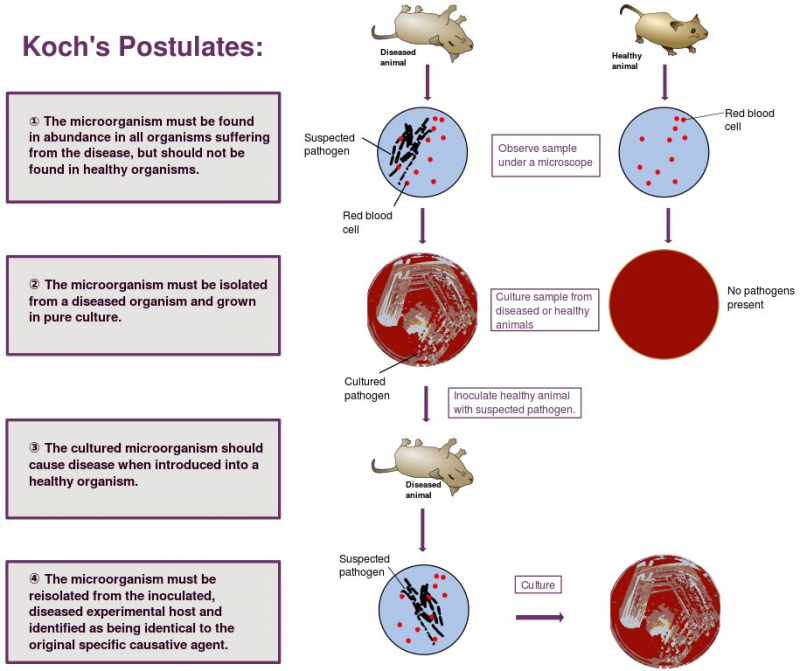Koch’s research on Anthrax
The majority of Koch's instructors were eminent scientists who had written and published several books and scholarly publications. Casimir Joseph Davaine, a French parasitologist, made the first observations of various organisms in the blood of sick animals in 1850. Even though Davaine made enormous strides, the tale of this disease remained far from being fully understood more than ten years later, in 1863, when he was talking about how anthrax is communicated. Following his studies on anthrax, Koch chose to use all of this information.
Robert Koch's ability to prove how and in what shape anthrax organisms develop in his laboratory is a noteworthy fact. As a scientist, he was determined to understand how anthrax spreads. These creatures grow into large filaments and include some dried spores as well. He dry-fixed bacterial cultures onto glass slides, stained the cultures with dyes, and then looked at them under a microscope to identify this causal agent. According to his findings, these dried spores may still serve as a breeding ground for bacteria if exposed to specific environmental factors. Anthrax will eventually result from these microorganisms. Since anthrax was a problem with farm animals at the time, all of this material was published and appreciated by scientists and non-scientists alike.
Koch wished to be well informed on anthrax. The relationship between animals and the bacterium known as the "anthrax bacilli" was one of the first topics he looked at. More particular, the researcher was interested in whether an animal could still transmit sickness even if it had not come into touch with the bacterium. His findings showed that the bacilli could still produce anthrax even in the absence of interaction with an animal. Koch also rose to fame once the findings were made public in 1876. He continued to collaborate with his editor at the time because he could learn from him how to take better pictures of the bacteria they were found.
In 1876, while working in Wöllstein, he published his discoveries in a pamphlet titled "Die tiologie der Milzbrand-Krankheit, Begründet auf die Entwicklungsgeschichte eines Bacillus Anthracis" (The Etiology of Anthrax Disease, Based on the Developmental History of Bacillus Anthracis). The first image of a bacteria was taken as a result of his publication on the anatomy of the anthrax bacterium in 1877. Because he was the first to associate a particular microbe with anthrax, his work with the disease is important, which is one of the interesting facts about Robert Koch. His study on anthrax is noteworthy since he was the first to reject the notion of spontaneous genesis and support the germ theory of illness by connecting a specific microbe with a particular disease.










